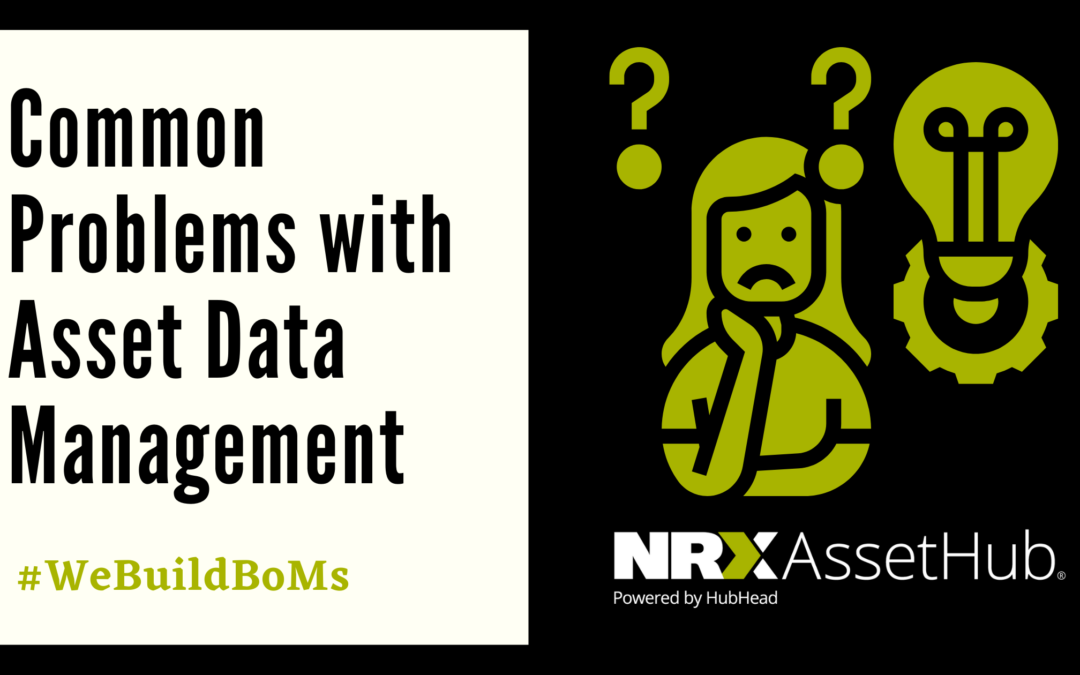Data management is the heartbeat of every asset-intensive company. These companies spend billions of dollars on Enterprise Resource Planning, Enterprise Asset Management, and Computerized Maintenance Management systems to adhere to maintenance and reliability standards. Investing in the right tools and technology to manage your data is important but knowing how to apply those solutions to meet business demands effectively is just as important, if not more.
Here at HubHead, we serve customers from industries spanning across oil & gas, manufacturing, energy, construction, and many more. The performance of these asset-intensive organizations is dependent on complex data structures; therefore, keeping them accurate is imperative to ensuring the business is operating at top effectiveness and efficiency.
Maintenance and reliability professionals play a key role in managing complex data, and their job is not always easy. Several problems can occur, affecting the company’s overall performance. Here are some of the most common issues HubHead’s customers face:
Problem: Undefined asset hierarchies
Solution: A common challenge among many of our customers is asset hierarchies. These can be very helpful if used correctly. They are a great way to organize assets in multiple locations. Oftentimes these hierarchies are structured differently depending on the site or location. This makes comparing and analyzing financial and reliability information between facilities an issue.
Usually, companies that don’t follow corporate standards struggle to organize their asset hierarchy effectively. If they are not structured properly, it becomes quite a pain, as tracking and finding assets become much more difficult. Aligning your asset hierarchy with international standards may be the answer to your problems. This creates a clear pathway for companies to standardize their asset data across multiple sites and ensure consistency through all facilities.
Problem: Visualization
Solution: The productivity of maintenance personnel relies on having the right tools at their fingertips to complete a work order on time. A chain reaction occurs when maintenance workers spend too much time searching for information. Here is a brief visual detailing that reaction:

Extracting maximum value from maintenance personnel means that they must access everything they need from any site or location at any time. Visual plant maps and exploded parts diagrams can be valuable tools. Maintenance technicians can visualize the parts catalog and view assets at a physical location. Visually selecting parts can avoid incorrect orders and reduce the time maintenance workers spend searching for the correct equipment. Visualizing maintenance data also reduces unnecessary inventory by eliminating duplicates through intelligent searching and filtering.
Problem: Keeping data clean
Solution: The effectiveness of a company’s EAM, ERP, and CMMS systems is contingent on the quality of the data imported into the system. Chances are, your system will not be functioning at its best if the data is inaccurate. In this type of scenario, you want to fix the root cause of the problem, not just the symptom. It does not matter if you have the best EAM, ERP, or CMMS system out there. If you have bad data, you will not get the value your investment should be getting you.
If you would like to find out more or if you would like to learn more about our solutions, feel free to book a demo, and our team would be happy to get in touch with you!
Aim for a gold medal in maintaining your asset management data!
The Importance of Data Standardization
Aligning your Asset Hierarchy with ISO 14224
Share this article




